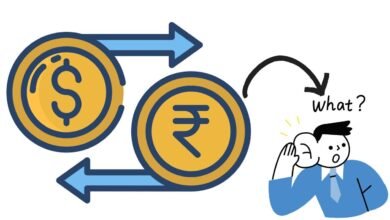Syrian Crisis Explained – What is happening in Syria?
SYRIAN CRISIS TIMELINE
INTRODUCTION
9 years of war, over 3 lakh civilian deaths, more than 8 lakh refugees and no solution to date. How did the popular uprising of 2011 turned in worst humanitarian crises, one has ever known? Let’s try to find it out by going deep into the background. We will also see how this turned into a proxy war between Russia and the US.
QUOTES
“So often Egypt, Iraq and Syria and other areas in the Holy Land ooze tears” – Pope Francis
“The war in Syria is tearing apart the social and economic fabric of the country” – Hafez Ghanem, World Bank, former Vice President.
STATISTICS – What Numbers have to Say?
The fight is between different parties to have their interests.
| GOVERNMENT | REBELS | ISIS |
| · Bashar al- Assad(President)
· free Syrian army
|
Mostly Sunni group | For the creation of “CALIPHATE”
|
| Supporters | ||
| · Russia
· Iran |
· US
· Arab League |
*Caliph was a spiritual leader of Islam. Establishing Caliphate refers to a state fully consisting of the Muslim community, governed by Islam’s principles only.
Population proportion
- SHIA-13%
- SUNNI-83%
What is the Syrian civil war death toll?
Till March 2020, the Syrian civil war death toll has accounted for 5,86,100.
How many Syrian refugees are there in 2019?
There are about 5.6 million Syrian refugees, 6.2 million people are relocated within Syria.
DESCRIPTION – Let’s take a Deep Dive
With the success of Arab spring in overturning Egypt’s and Libya’s presidents, it gave a ray of hope to pro-democracy Syrians who were under the rule of brutal control of Bashar al Assad.
ARAB SPRING: A series of protests which took place in Arab countries to get rid of oppressive rule. (Period: early 2010s)
Syrian Crisis background
Bashar, the son of the country’s president, was also a commander of armed forces. He came into power right after his father died in 2000 (who ruled Syria for more than three decades).
As a youth leader, he took his father’s place and promised wide-ranging reforms to Syria. But he continued his father’s hardline policy and made clear that democratic rule was not his plan.
Another nerve raising reason was, that Assad being from the Shia minority was politically suppressing the Sunni population which was not accepted by the other community.
Following this, thousands of people took to the streets calling for Assad’s removal and started widespread protests.
The demonstrators were violently suppressed by opening fire against them by the army. The protesters eventually took arms in response to widespread killings.
2013 – US and Russia came into the picture. After the US backed the protestors, Russia extended support to the regime. Both of these countries were afraid of increasing each other’s influence in the middle region.
And this is how a conflict turned into a war, including many regional and superpowers of the world.
The Syrian conflict is a mix of
Civil war: Fight between two or more sides a country i.e. between government and protestors.
Cold war: Period of geopolitical tensions between the US and the USSR between 1947-1991.
Holy war: Between two branches of Islam (Shia and Sunni).
Why did the Islamic State militant group get involved?
IS is a militant group, which uses extreme violence against those who don’t agree with their views.
The group rose to take advantage of the disturbance and to set up Islamic Caliphate.
Chemical weapon usage
In August 2013, chemical weapons have been used but neither the government nor the rebels took the responsibility. There was widespread anger all around.
In September 2013, both Russia and US government reached an agreement that Syria should give up the use of chemical weapons.
IMPACT OF SYRIAN WAR
- Millions of people have lost their homes. With no homes, children are dying with extreme freezing
- Indiscriminate bombings, aerial attacks are targeting the civilians.
- The economy has tattered with no employment generation.
- People have no access to basic amenities like healthcare, education food security, and shelter.
- All six UNESCO heritage sites have been ruined.
- In areas, retaken by ISIS, have landmines planted till now. This is causing a high count of civilians as well as troops causalities.
- The war trauma has deeply affected the mental development and learning ability of children.
CONDITIONS IN SYRIA
- All the major cities have been destroyed. People have escaped to neighboring countries.
- Human rights violations on a great scale. The war has brought misery to the people.
- The Economy has ruined.
- With no livelihood opportunities, the Syrians are forced to live life below the poverty line.
- Due to the fear of sexual violence, women mobility is restricted, resulting in avoiding schools.
- Minors are being exposed to extreme violence and weapon attacks. With no education and protection, children are being forced into the workforce and pushed to become child soldiers.
Humanitarian assistance
Various organizations are responding to emergencies in Syria are:
- United Nations Office for the coordination of humanitarian affairs (UNOCHA)
- Syria humanitarian assistance response plan (SHARP)
- United Nations children fund (UNICEF)
- Apart from these, there are many individual donors to Syria like the US, UK, Germany, Japan, etc.
- In 2015, 1500 violation cases of children’s rights were being reported by UNICEF
These are working day and night to provide economic, social as well as emotional support.
CONSEQUENCES
The prolonged war has effected Syria both socially and economically. The conflict has destroyed the infrastructure to the extent that it has taken the country many decades back. Further, it was reported by the World Bank that an extended period of war may make the recovery harder.
CONCLUSION
During this period, several initiatives were being taken by the UN and Arab League to establish peace but were refused by the Syrian government. As technology is advancing day by day, focusing only on the military solution may worsen the situation further. A Political negotiation with the help of a third- party to sign a cease-fire agreement between the major role players can alleviate the situation.
With all the countries coming together and helping Syria in establishing democracy, can help to save the unfortunate future of the Syrians. One possible way is by standing together at the UN and creating a strong international pressure that it will force the anti-social elements to kneel. Apart from that, keeping a strict checkup on ammunition and oil supply will break the logistical chain. The fight will not continue forever with inadequate resources.
On the other hand, rehabilitation of refugees may not heal their trauma, but it can give a flourishing future to the upcoming generations.
Author: Priyanka Mahala
Must Explore




